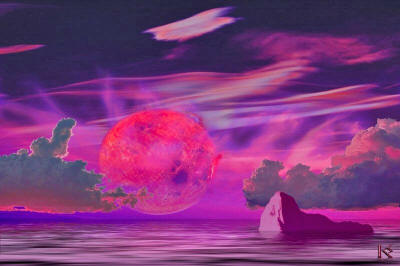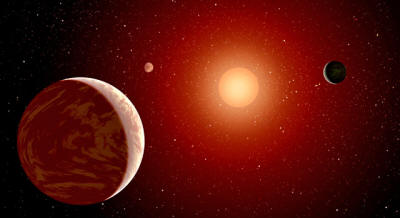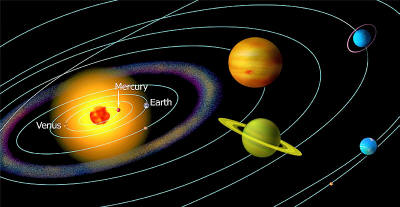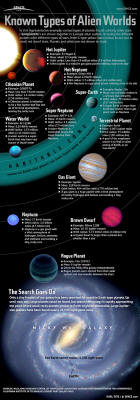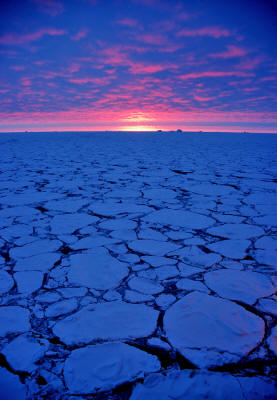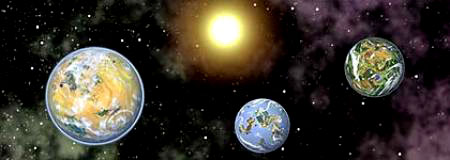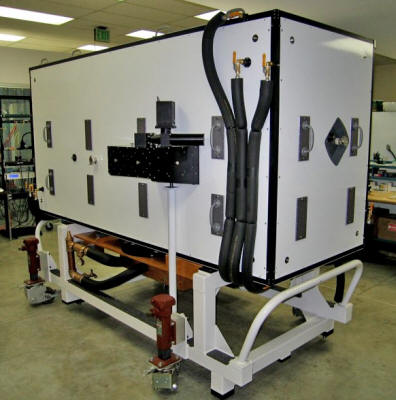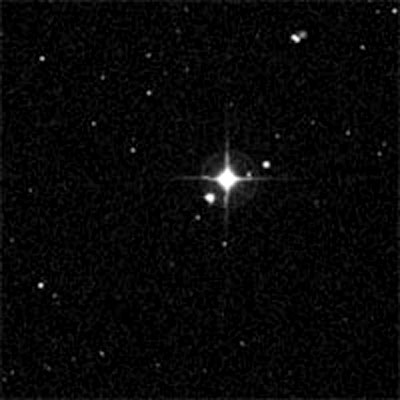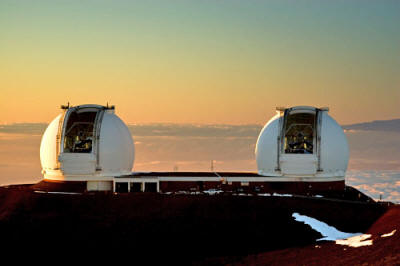|
|
|
Contributor
27 April 2012
Artist's impression of sunrise from the surface of Gliese 581c,
an Earthlike planet
in the habitable zone of its red dwarf star.
These stars, which typically also live
longer than Class G stars like the sun, are thought to make up about
80 percent of the stars in the Milky Way, astronomers have said.
A second look
Since red dwarfs are small and dim, the habitable zone surrounding them - the region where an orbiting planet's surface water can remain liquid - is relatively close to them.
But the study, based on data from the European Space Agency's HARPS spectrograph in Chile, used a sample of 102 red dwarfs to estimate that 41 percent of the dim stars might be hiding planets in their habitable zone.
Difficult
environments
However, if the alien planet had a
magnetic field, this could provide some protection. So, too, could
an ocean of water.
Life that evolved beneath an ocean might be
shielded from the brunt of the radiation.
Another problem with planets tightly bound to their host star is a
phenomenon known as tidal locking, in which one side of the world is
perpetually turned toward the sun and receiving almost all of the
heat.
Even with these challenges, the sheer influx of tens of billions of potentially habitable planets improves the chances of finding alien life.
Habitable Alien Planets
Astrobiology Magazine Contributor
This artist's concept illustrates a young, red dwarf star surrounded by three planets. Such stars are dimmer and smaller than yellow stars like our sun, which makes them ideal targets for astronomers wishing to take images of planets outside our solar system,
called exoplanets.
Stars known as red dwarfs might have
larger habitable zones friendly to ‘life as we know it' than once
thought, researchers say.
More and more planets are getting discovered around red dwarfs - for instance, a potentially habitable "super-Earth" at least 4.5 times the mass of Earth, GJ 667Cb, was recently found orbiting the red dwarf GJ 667C.
The habitable zone of a star is defined by whether liquid water can survive on its surface, given that life exists virtually wherever there is liquid water on Earth.
Too far from a star, and a world is too cold, freezing all its water; too close to a star, and a world is too hot, boiling all of its water off.
Since red dwarfs are so cold compared to our sun, planets would have to be very close in to be habitable to any life as we know it - in many cases,
less than the
distance between Mercury and our sun
Since red dwarfs are so cold compared to our sun, planets would have to be very close in to be habitable to any life as we know it - in many cases, less than the distance between Mercury and our sun.
This closeness actually makes them
appealing to hunters of alien worlds - planets near their stars
eclipse them more often, making them easier to detect than planets
that orbit farther away.
Also, young red dwarfs less than 3
billion years old may be very active, firing off flares several
times per day, causing ultraviolet radiation to jump by 100 to
10,000 times normal levels and potentially sterilizing the surface
of a nearby planet or even helping to strip off its atmosphere.
Frozen water such as ice and snow reflects light, which means it helps cool planets, including Earth.
decreasing the
planet's temperature
The researchers modeled how reflective
ice and snow would be on simulated planets orbiting two real-life
red dwarfs. Ice and snow are less reflective against longer, redder
wavelengths, while red dwarfs obviously have fairly red light to
begin with.
This means the outer edge of the habitable zone around red dwarfs might be 10 to 30 percent farther away from its parent zone than once suggested.
Joshi cautioned they only looked at the effects of water ice and snow, when other kinds might be important when considering how much energy a planet absorbs and reflects, such as frozen carbon dioxide, nitrous oxide and methane.
Also,
Joshi and Robert Haberle detailed their findings in the Jan. 23 issue of the journal Astrobiology.
...in
Star's Habitable Zone from Astrobiology Website
With an orbital period of about 28 days
and a minimum mass 4.5 times that of the Earth, the planet orbits
within the star's "habitable zone," where temperatures are neither
too hot nor too cold for liquid water to exist on the planet's
surface. The researchers found evidence of at least one and possibly
two or three additional planets orbiting the star, which is about 22
light-years from Earth.
Their work will be published by
Astrophysical Journal Letters, and the manuscript will be posted
online at
arxiv.org/archive/astro-ph.
This discovery indicates that
potentially habitable planets can occur in a greater variety of
environments than previously believed.
The Carnegie Planet Finder Spectrograph at the beginning of Summer 2008, before it was installed at the Magellan II Telescope. Credit: Carnegie Institute of Washingon
They also incorporated new measurements from the W. M. Keck Observatory's High Resolution Echelle Spectrograph and the new Carnegie Planet Finder Spectrograph at the Magellan II Telescope.
Their planet-finding technique involved measuring the
small wobbles in a star's motion caused by the gravitational tug of
a planet.
The star, GJ 667C. Credit: Digitized Sky Survey
Such elements are the building blocks of terrestrial planets, so it was thought to be less likely for metal-depleted star systems to have an abundance of low-mass planets.
GJ 667C had previously been observed to have a super-Earth (GJ 667Cb) with a period of 7.2 days, although this finding was never published. This planet orbits so close to the star that it would be too hot for liquid water.
The new study started with the aim of obtaining the orbital parameters of this super-Earth.
The team also incorporated new measurements from the High Resolution Echelle Spectrograph at the W.M. Keck Observatory, located on the island of Hawai' Image Credit: Pablo McLoud/WMKO
The new planet receives 90 percent of the light that Earth receives. However, because most of its incoming light is in the infrared, a higher percentage of this incoming energy should be absorbed by the planet.
When both these effects are taken into account, the planet is expected to absorb about the same amount of energy from its star that the Earth absorbs from the Sun.
The team found that the system might also contain a gas-giant planet and an additional super-Earth with an orbital period of 75 days. However, further observations are needed to confirm these two possibilities.
|


